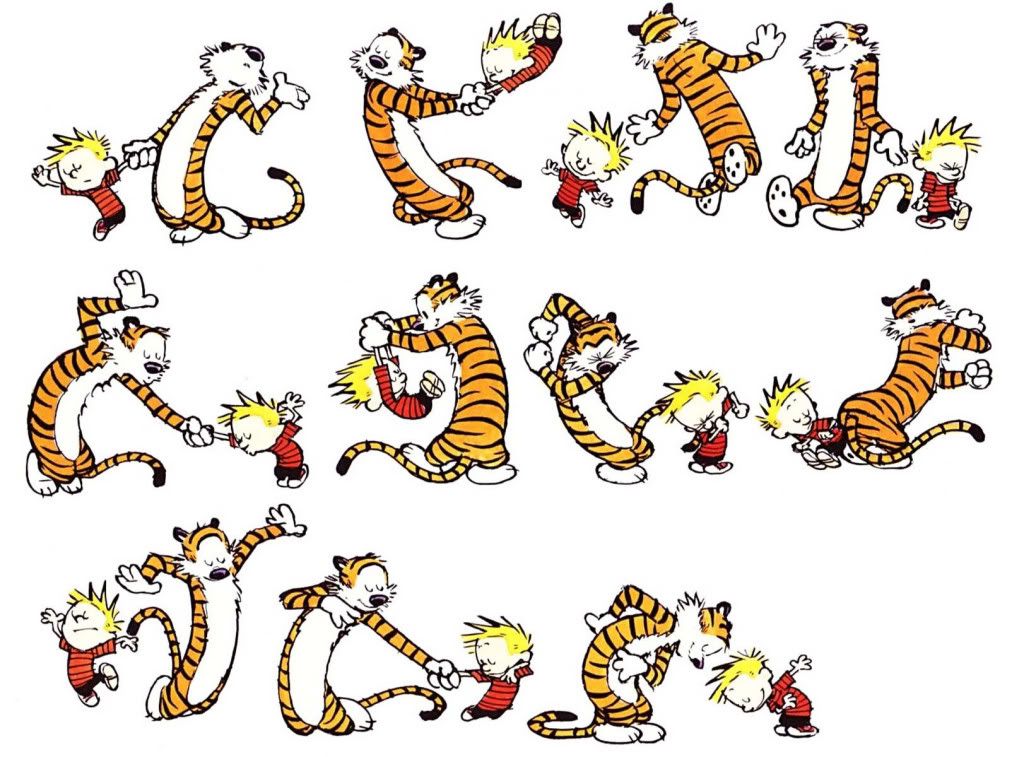 The goal of this writing project is to analyze the arguments made in this specific strip of Calvin and Hobbes by Bill Watterson. This strip will be referred to as “Math Atheist.” In order to fulfill this general purpose, I will first include the relevant historic facts regarding the culture of the early 1990s. I will then introduce the two main arguments of “Math Atheist” using specific examples from the text.
The goal of this writing project is to analyze the arguments made in this specific strip of Calvin and Hobbes by Bill Watterson. This strip will be referred to as “Math Atheist.” In order to fulfill this general purpose, I will first include the relevant historic facts regarding the culture of the early 1990s. I will then introduce the two main arguments of “Math Atheist” using specific examples from the text.The first argument I will analyze is that of convention and experimentation. When “Math Atheist” was printed in newspapers (and mentioned in the previous pre-write), Watterson was struggling against the conventions of comics. He desired to experiment and draw extravagant figures, while the newspapers were forcing him to downsize and simplify his drawings.
In many ways, “Math Atheist” is a mockery of those conventions and mechanics. Except for a lamp in the fourth panel, there are no extra figures or backgrounds of any kind. Even the table, chair, facial expressions, and gestures are minimal. Given the above historical information, “Math Atheist” makes an argument against the mechanics of early 1990s comic writing by following those conventions. Combined with the other themes of Calvin and Hobbes, which often stress nonconformity, this argument is clear and compelling.
The second argument “Math Atheist” makes is in the dialogue. As also is mentioned in the previous pre-write, the public school system in the early 1990s was much more closed-minded to religion than it is today. Through his humorous but pointed dialogue between Calvin and his tiger Hobbes, “Math Atheist” urges the American people to lighten up when it comes to religion in schools. After all, almost everything students learn in school can be traced back to religious roots. Of course, this argument will be expanded upon in the final draft.
The primary audience of this assignment is, of course, my professor and classmates. As such, it will be written in an academic style with a heavy emphasis on logical analysis and historical support. However, since anyone could see the final draft, it will also be understandable to the average reader. Any non-common sense terms will defined and any historical facts will be duly documented.

The success of this paper will be determined by the clarity of my arguments. It is difficult to prove a humorous cartoon is making a serious argument about national policy. Without the historical background, it may also seem a stretch to claim “Math Atheist” is arguing against convention by following the very convention it is speaking against. Therefore, if my audienced is convinced my analysis is correct, and sees that various techniques such as dialogue, typography, framing, artistic complexity, and other conventions, the project may be considered a success. These technical elements will be expanded upon in the final draft, but word constraints prevent me from doing so now.
My concern about this project is projecting my personal opinion onto the project. I strongly agree with the arguments I claim “Math Atheist” is making. Therefore, it would be very easy for me to turn this into an argumentative essay rather than an analysis of “Math Athiest.” I will attempt to overcome this problem by strictly adhering to an analysis, rather than allowing my own conviction interfere with my objective writing.
I am greatly looking forward to WP#2. I have always enjoyed comics, and Calvin and Hobbes is one of my favorite strips. It will definitely be a challenge to put my personal opinion aside, but I am looking forward to the opportunity to analyze one of the most recognized comic strips of the modern era.
No comments:
Post a Comment